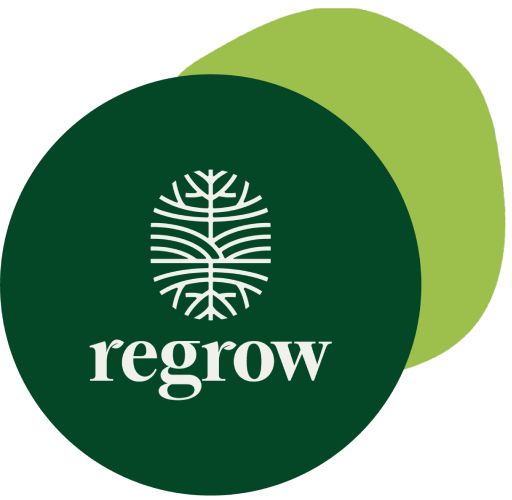As the agriculture industry moves towards a more sustainable future, data is becoming an important tool for building and scaling sustainability programs. Crop health, practice adoption, weather patterns and other massive data sets make it possible to identify high-level environmental trends and create effective, flexible programs.
However, there are several things we (stakeholders across agriculture, food and climate industries collectively) need to do to make this a reality:
- We need to develop methodologies for sharing data across stakeholders in the agricultural value chain while respecting farmer privacy.
- We need a shared data language to quantify and communicate the benefits of climate-smart farming.
- We need to reduce costs for data measurement. High measurement costs in carbon projects and regenerative agriculture hinder scalability.
- We need a longitudinal and holistic approach to data collection and analysis.
Experts at Regrow’s Agriculture Resilience Summit collaborated to outline some of our key needs in data collection and consider our opportunities for growth.
First things first: do we even need agricultural data?
Data on agricultural production, farm management trends and the impact of farming practices is essential for building and scaling sustainability programs such as carbon farming programs, biodiversity initiatives, and water quality efforts.
Today, technologies like satellite imagery and remote sensing provide us with unprecedented access to data about soil health, crop productivity, environmental conditions, and other aspects of sustainable agriculture practices.
With access to the right information, organizations can gain an understanding of current supply chain operations, identify opportunities for efficiency, and measure the success of existing climate programs.
As an industry, we need to learn how to interpret data patterns from multiple sources (satellite imagery, ground research, farmer-reported practices, etc.) and across multiple sects (cropping regions, crop types, and environmental systems), identify large-scale trends, and use this information to create scalable programs that are still flexible enough to meet farmers’ needs. To gain a better understanding of this, see our recent blog post on ‘pencil farming’.
With the importance of data in mind, how can we start to reframe our systems to use data more effectively?
Sharing data while respecting grower privacy
One of the primary challenges we face is finding ways to share data across the agricultural value chain while safeguarding the privacy of our farmers.
In an era where information is invaluable, striking the right balance between transparency and privacy is crucial. Establishing robust methodologies for responsible data sharing ensures that stakeholders can collaborate effectively without compromising the integrity of sensitive farmer information.
Experts at the Summit suggested building a level of anonymity into data collection at the consulting level. This will allow us to collect a sample of data and scale insights while maintaining grower privacy and avoiding competitive pressures - especially with specialty crops, where competitive pressure is high.
Some also considered developing a scalable way to transfer data from farmers through an intermediary to downstream customers to better maintain anonymity and privacy.
Crafting a common language for climate-smart farming
To fully capitalize on the benefits of climate-smart farming, we need a shared data language. This common ground not only quantifies the advantages of sustainable practices but also serves as a bridge for communication with insurance and investing companies.
Farmers, often wary of participation due to risks over time and concerns about permanence, can be incentivized through clear and measurable data. This step acts as a catalyst, fostering a collaborative environment where all parties involved can contribute to and benefit from sustainable initiatives.
What could this shared language look like? Some of our considerations are:
- Sharing emissions factors: These are less common, and may not mean as much to all parties, but it’s a compilation of several data points that may act as a shared language for stakeholders.
- Reporting yield stability: This can give insight to growers and help them tie climate-smart practices to on-field resilience.
What other metrics might we use to aggregate our data into incentive-based metrics for industry stakeholders?
Cutting the costs of data collection
While the potential gains from sustainable programs are immense, high measurement costs act as a roadblock to scalability.
The carbon project ecosystem is often strained because margins become slim with increasing stakeholders involved in a project, and measurement is expensive due to the level of technology required.
Tackling this challenge head-on is essential for making these initiatives economically viable.
By investing in technologies and methodologies that reduce measurement costs in carbon projects and regenerative agriculture, we pave the way for widespread adoption. This, in turn, creates an environment where sustainability is not just an ethical choice but it’s financially sound.
Embracing a holistic data approach
A short-sighted view won't suffice. To truly understand the impacts, risks, and benefits of regenerative practices, we need a longitudinal and holistic approach to data collection and analysis. A timeframe 5-7 years allows us to internalize the complexities of sustainable agriculture, considering its effects on the environment, economy, and society. By embracing this comprehensive approach, we position ourselves to make informed decisions that stand the test of time.
The path to a sustainable future is paved with data.
By addressing the outlined challenges head-on, we can unlock the full potential of data in building and scaling sustainability programs. The collaboration of stakeholders, the creation of a common language, the reduction of measurement costs, and the adoption of a holistic data approach are the cornerstones of a green revolution in agriculture. As we cultivate a future where our fields flourish and our practices leave a positive impact, data remains the key to sowing the seeds of sustainability.
Learn more about how data can help us build resilient supply chains: resilience.regrow.ag.



